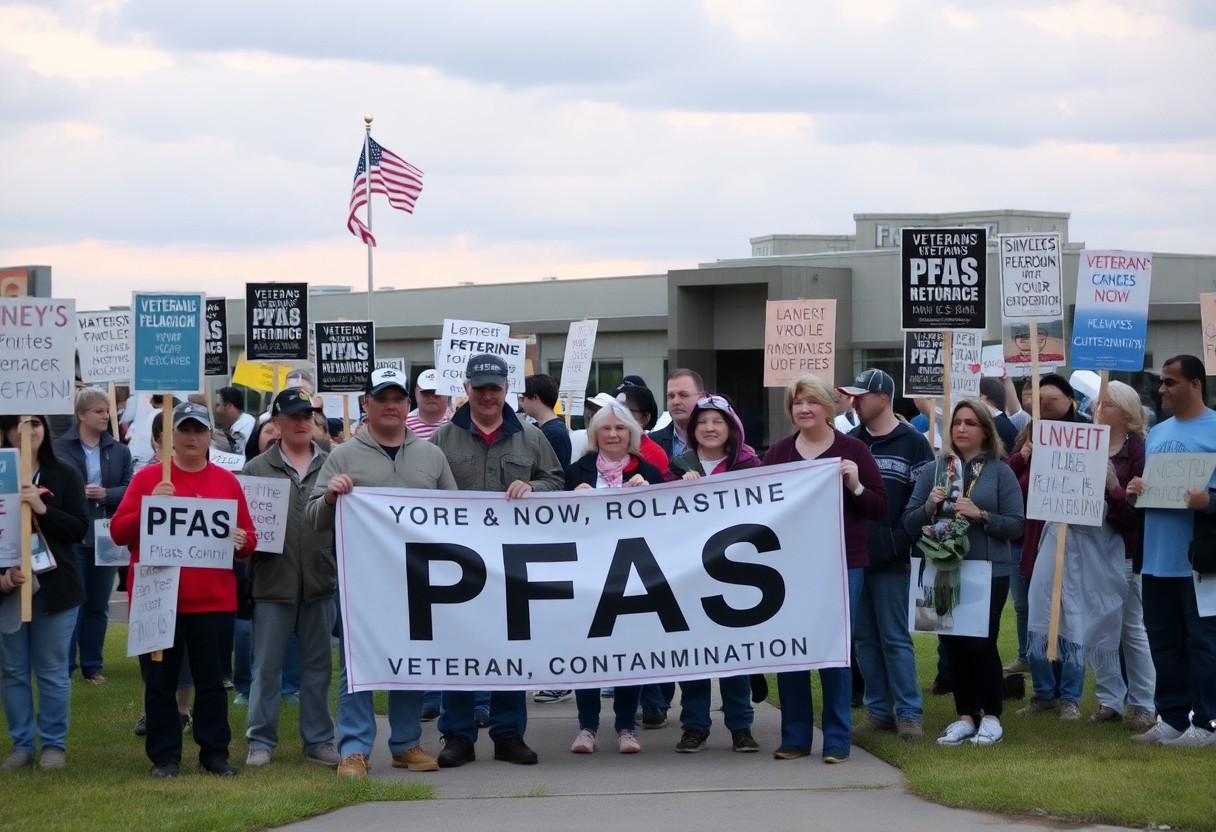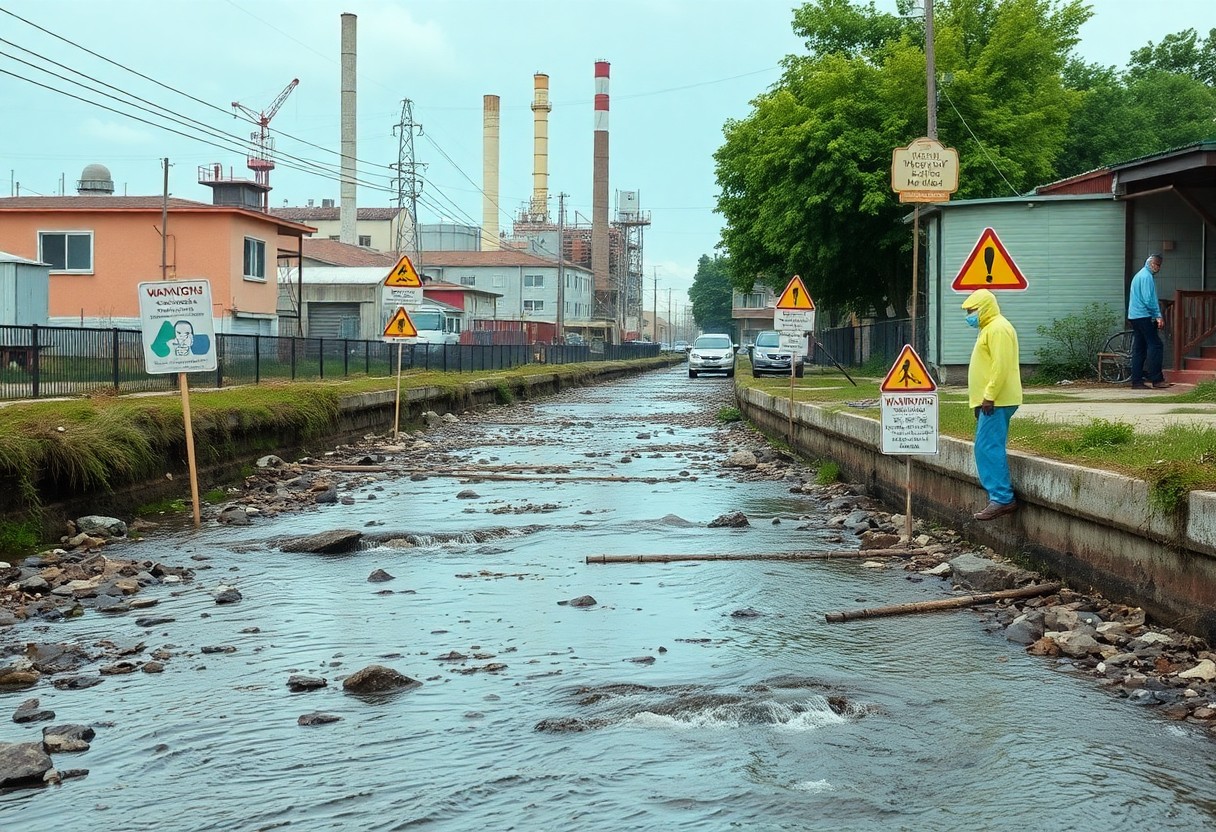There’s an alarming connection between industrial practices and the widespread contamination of water sources with PFAS chemicals, commonly referred to as “forever chemicals.” As you read, it’s vital to understand how manufacturing processes, along with your everyday products, contribute to this ongoing crisis that threatens not only your water supply but also public health. This post will investigate into the ways industries have impacted your environment and what steps can be taken to mitigate these dangers moving forward.
Understanding PFAS
A comprehensive understanding of PFAS, or per- and polyfluoroalkyl substances, is vital due to its widespread presence and potential health impacts. These man-made chemicals have unique properties that make them resistant to water, grease, and stains, resulting in their use in various consumer products and industrial applications. Their persistence in the environment and human body raises significant concerns about their long-term effects.
Definition of PFAS
Beside their complex chemistry, PFAS are a group of synthetic compounds characterized by the presence of carbon-fluorine bonds, which provide exceptional stability. Often referred to as “forever chemicals,” PFAS do not break down easily in the environment, leading to accumulation in soil and water sources, posing risks to human health and ecosystems.
Common Sources of PFAS Contamination
One leading cause of PFAS contamination stems from human activity, particularly industries that utilize these substances in products such as firefighting foams, non-stick cookware, and stain-resistant textiles. Additionally, wastewater treatment plants and landfills can release PFAS into the surrounding soil and water sources, compounding the issue.
To gain insight into the common sources of PFAS contamination, it’s vital to recognize that industrial sites frequently discharge PFAS into nearby water systems. You may find PFAS in firefighting foam used during training exercises or emergency responses, which can lead to runoff affecting groundwater. Furthermore, textiles, coatings, and food packaging can also leach PFAS, contributing to your exposure through everyday products. The presence of landfills and wastewater treatment plants adds another layer of risk, as these sites can act as reservoirs for PFAS pollution that may seep into your local water supplies.
Historical Context of PFAS Use
Some of the earliest applications of PFAS date back to the 1940s when these compounds were recognized for their unique properties, such as resistance to heat and chemical reactions. Initially, they gained popularity in industries ranging from textiles to food packaging, providing water- and grease-proofing capabilities. As manufacturing expanded, the reliance on PFAS grew, leading to widespread use and the eventual contamination of water sources.
Industrial Applications of PFAS
Among the numerous sectors utilizing PFAS, you will find aerospace, automotive, and electronics industries, where water and stain resistance is imperative. These compounds are integrated into products such as non-stick cookware, firefighting foams, and waterproof textiles, allowing for innovative solutions but often at the cost of environmental safety.
Regulatory Oversights and Challenges
PFAS are subject to limited regulation, which has created significant challenges for effective management. Policymakers grapple with the complex nature of these chemicals and their scarcity in direct regulatory frameworks.
Due to the widespread use of PFAS across various industries, regulatory oversight has struggled to keep pace with the rapid contamination of water supplies. Deficiencies in existing regulations often leave you vulnerable to exposure, as the long-term health effects remain unclear. Advocacy for stricter policies becomes imperative as research highlights the potential risks of PFAS in drinking water, which could contribute to significant health problems. You may find it imperative to stay informed about local regulations and potential contaminants affecting your community’s water quality.
The Role of Industries in Contamination
Clearly, industries are at the forefront of the PFAS water contamination crisis, as their practices significantly influence the environment. The manufacturing and use of PFAS-containing products have led to a noticeable increase in the presence of these hazardous substances in water sources. You may be surprised to learn how the decisions made by industries affect not just local ecosystems but also public health at large, highlighting the need for accountability and better practices to mitigate the risks associated with these chemicals.
Manufacturing and Chemical Production
Around the world, the manufacturing and chemical production sectors have been key contributors to PFAS contamination. These industries often utilize PFAS substances for their water-repellent and stain-resistant properties, resulting in significant environmental impact. As a result, understanding the manufacturing processes is imperative for you to grasp the complexities of PFAS water contamination and the challenges it presents to regulatory bodies seeking to protect public health.
Waste Management Practices
Waste management practices play a critical role in the PFAS contamination crisis. Waste disposal methods used by industries frequently lead to leaching of harmful substances into local water supplies. You must consider how improper handling of waste, including the incineration and landfill practices, can result in PFAS infiltrating surrounding environments, posing risks to both human and ecosystem health.
Another key aspect of waste management practices is the lack of *industry-wide regulations* and *accountability*, which may contribute to widespread contamination. You should be aware that *some disposal methods*, such as *incineration*, can release PFAS into the air, while others might facilitate *leachate migration into groundwater*. Implementing comprehensive waste management strategies is imperative to minimize contamination risks. By adopting safer waste practices through *recycling*, *treatment*, and *proper storage*, industries can significantly mitigate their environmental impact, making your water supply safer and reducing health risks associated with PFAS.
Health Impacts of PFAS Exposure
Your exposure to PFAS, commonly referred to as “forever chemicals,” can lead to significant health issues. These synthetic compounds have been linked to severe conditions such as liver damage, thyroid disease, and various cancers. Moreover, they may disrupt hormonal balance and impair immune system function, putting individuals at a greater risk of illness. Understanding the full extent of PFAS-related health impacts is vital for protecting your well-being and that of your loved ones.
Human Health Concerns
Across the globe, studies reveal alarming trends linking PFAS exposure to a range of health concerns. Known as endocrine disruptors, these chemicals interfere with hormonal systems, potentially resulting in reproductive issues, developmental delays, and even immune deficiencies. It’s vital to recognize these dangers, as they pose serious long-term risks to your health and that of future generations.
Environmental Consequences
One of the most alarming aspects of PFAS contamination is its profound impact on ecosystems. These chemicals persist in the environment, polluting water and soil, ultimately affecting wildlife and plant life. As each organism in the food chain accumulates PFAS, you may find that these chemicals also enter your diet through fish and crops, creating a vicious cycle of contamination.
Due to their remarkable persistence in the environment, PFAS chemicals bioaccumulate in living organisms, leading to dangerous concentrations over time. This not only affects aquatic life but also disrupts entire ecosystems, leading to reduced biodiversity. Furthermore, as wildlife and human populations are exposed to contaminated resources, the cycle of health concerns persists, threatening not only environmental integrity but also your own health and safety. This ongoing contamination emphasizes the dire need for effective regulatory measures and remediation strategies to mitigate the impact of PFAS on both the environment and human health.

Case Studies of Contaminated Sites
For understanding the extent of PFAS water contamination, examining specific case studies provides valuable insight. Here are some notable contaminated sites:
- Hinkley, California – Residents exposed to hexavalent chromium and PFAS from Pacific Gas and Electric’s operations.
- Camp Lejeune, North Carolina – Approximately 1 million people affected by contaminated water with various PFAS compounds.
- Hoosick Falls, New York – A community with high PFAS levels in their drinking water, linked to a local manufacturing plant.
- Tri-Cities, Washington – Close to 70 contaminated sites where PFAS have been detected, primarily from industrial runoff.
High-Profile Incidents
High-profile incidents, such as the contamination events at Hinkley and Camp Lejeune, have heightened public awareness about PFAS. These situations illustrate how industrial practices can lead to widespread environmental damage and health risks for communities, sparking legal battles and remediation efforts.
Lessons Learned from Remediation
From various remediation efforts, you can gain important insights into effective responses to PFAS contamination. Understanding the challenges and successes of these processes informs future strategies.
A comprehensive look at the remediation projects reveals that a multi-faceted approach, combining community engagement with advanced treatment technologies, is important for successful outcomes. You will also notice the importance of long-term monitoring and transparency to rebuild community trust. Equally significant is the recognition of complete removal versus simple containment; remediation efforts focused on eliminating PFAS sources lead to better public health results. This experience underscores the need for robust regulatory frameworks that prioritize environmental and human health.
Industry Accountability and Responses
All industries involved in the production and use of PFAS must acknowledge their role in the water contamination crisis. They are under increasing pressure to adopt stringent safety protocols and minimize emissions of these harmful chemicals. As awareness grows, you can expect greater scrutiny of their practices and a demand for transparent reporting on environmental impacts.
Legislative and Policy Developments
Any significant legislative changes are being proposed to regulate PFAS more effectively. Lawmakers are pushing for stricter guidelines and monitoring systems in order to safeguard public health and environmental safety. As these policies evolve, you may notice improvements in water treatment technologies and reduced PFAS levels in your community.
Corporate Responsibility Initiatives
An increasing number of companies are adopting corporate responsibility initiatives aimed at addressing PFAS pollution. Initiatives include investing in research for safer alternatives, implementing better waste management practices, and participating in public awareness campaigns about PFAS risks.
Consequently, many businesses are not only focusing on reducing their PFAS footprint, but also taking an active role in community engagement to promote safer practices. This includes collaborating with environmental organizations and supporting stricter regulations. By holding themselves accountable, companies can help restore trust with consumers and contribute to the larger goal of environmental sustainability. You can play a part in this movement by supporting brands that prioritize responsibility and transparency in their operations.
Final Words
Following this, you must recognize that the role of industry is significant in the PFAS water contamination crisis. Your understanding of how manufacturing practices contribute to environmental degradation is necessary in advocating for accountability and change. As you engage with policymakers, support sustainable practices, and stay informed, you play a vital part in addressing the widespread impacts of PFAS and ensuring the protection of your water supply and health. Together, we can work towards a future where clean water is a right for all.





















